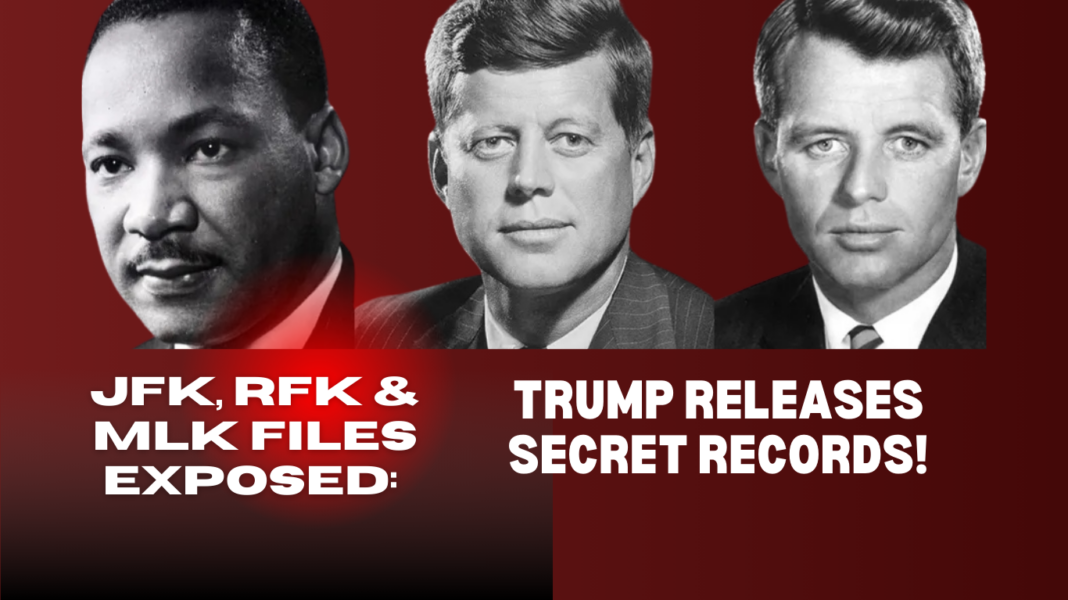President Donald J. Trump has taken a decisive step toward fulfilling his pledge for maximum transparency by ordering the full release of previously classified records related to the assassinations of President John F. Kennedy, Senator Robert F. Kennedy, and civil rights leader Dr. Martin Luther King Jr.
In a bold move aimed at rebuilding public trust in the intelligence community (IC) and federal agencies, Trump issued Executive Order 14176, declaring that “the continued redaction and withholding of information from records pertaining to the assassination of JFK is not consistent with the public interest and the release of these records is long overdue.” The President announced that the records would be released without redactions, effective March 18.
Following the President’s directive, Director of National Intelligence (DNI) Tulsi Gabbard immediately directed all relevant agencies to comply, ensuring that all unredacted records within the President John F. Kennedy Assassination Records Collection were transferred to the National Archives and Records Administration (NARA) for public access.
Public Access and Record Availability
Beginning today, the released records will be accessible online at archives.gov/jfk, in person, via hard copy, or on major media platforms. American citizens will also have the option to request digital and hard copies for review at the National Archives at College Park, Maryland. While records that were previously available for in-person review will be digitized, newly released documents will be uploaded to the archives.gov/jfk repository as they are processed.
DNI Tulsi Gabbard, who oversaw the execution of the President’s order, has confirmed that updates will be provided through her official X account (@DNITulsiGabbard) and Truth Social (@DNITulsiGabbard) as more files are released.
Scope of Released Records and Legal Considerations
The release includes approximately 80,000 pages of formerly classified documents, shedding new light on decades-old controversies. However, some materials, including documents withheld under court seal for grand jury secrecy and those protected under Section 6103 of the Internal Revenue Code, must remain classified under existing legal frameworks.
NARA is collaborating with the Department of Justice to expedite the review of these additional materials. While some grand jury records may remain sealed, NARA has assured the public that, regardless of timing, the documents will be released immediately upon court approval.
A New Era of Government Accountability?
President Trump’s directive is being hailed by supporters as a monumental step toward government accountability and public transparency. “The American people deserve the truth,” Trump remarked. “For too long, vital information has been kept from them. Today, that ends.”
While the release of these records marks a significant victory for advocates of government openness, experts anticipate that the unredacted files may spark fresh debates and investigations into one of the most scrutinized moments in American history.
Background: A Nation Shaken by Tragedy
The release of these documents brings renewed attention to three of the most shocking and consequential assassinations in American history.
John F. Kennedy – November 22, 1963
President John F. Kennedy was assassinated while riding in a motorcade through Dealey Plaza in Dallas, Texas. Lee Harvey Oswald was arrested shortly after the shooting and charged with Kennedy’s murder. However, Oswald was killed two days later by nightclub owner Jack Ruby while in police custody, fueling widespread speculation and conspiracy theories about the assassination. The Warren Commission, established by President Lyndon B. Johnson, concluded that Oswald acted alone, but doubts about the official account have persisted for decades.
Robert F. Kennedy – June 5, 1968
Senator Robert F. Kennedy, a leading Democratic presidential candidate and former U.S. Attorney General, was assassinated at the Ambassador Hotel in Los Angeles shortly after delivering a victory speech in the California Democratic primary. He was shot by Sirhan Sirhan, a Palestinian immigrant who cited Kennedy’s pro-Israel stance as his motive. Though Sirhan was convicted and remains incarcerated, questions about whether he acted alone or if there was a second gunman have lingered.
Dr. Martin Luther King Jr. – April 4, 1968
Dr. Martin Luther King Jr., the iconic civil rights leader who championed nonviolent resistance and racial equality, was assassinated in Memphis, Tennessee, while standing on the balcony of the Lorraine Motel. James Earl Ray, a fugitive with a criminal record, was arrested and pleaded guilty to the murder. However, King’s family and many civil rights activists have long suspected a larger conspiracy, citing inconsistencies in Ray’s confession and trial.
What Lies Ahead?
As the nation gains access to these long-awaited records, historians, journalists, and the public will closely analyze the documents for potential revelations that could reshape our understanding of these events. The release may validate existing theories or uncover new dimensions to these tragic moments in American history.
For further updates, visit archives.gov/jfk or follow DNI Gabbard’s official channels for real-time notifications.
A global media for the latest news, entertainment, music fashion, and more.















